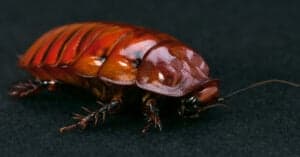Your vegetable garden is in full bloom. The beefsteak tomatoes are reaching for the sun, and it seems as if you might get a bumper crop of green beans this year. Yet, you can’t help but think that something is amiss. You look closer and realize your worst fears — squadrons of Japanese beetles (Popillia japonica), one of nature’s most dreaded pests, are attacking your plants. Where are the tachinid flies when you need them? They’d put a hurt on those beetles.
For many humans, insects are creepy, crawly vermin. Some, like the Japanese beetle, can cause massive damage, as any gardener or farmer knows. Others, like the tachinid fly, we can’t live without. That’s because the tachinid fly is a natural enemy of the Japanese beetle and other pests, a beneficial insect that most people would want to see in their yards. Beneficial insects come in three main types. Many are pollinators that pollinate fruits, vegetables, and flowers. Others are predators that stalk our gardens and yards, ridding them of pests. Still, others are parasitizers. They’ll lay their eggs on or near a pest, and once the eggs hatch, feast on the insect.
The world abounds with insects. Here are six that you wouldn’t mind seeing in your yard or garden.
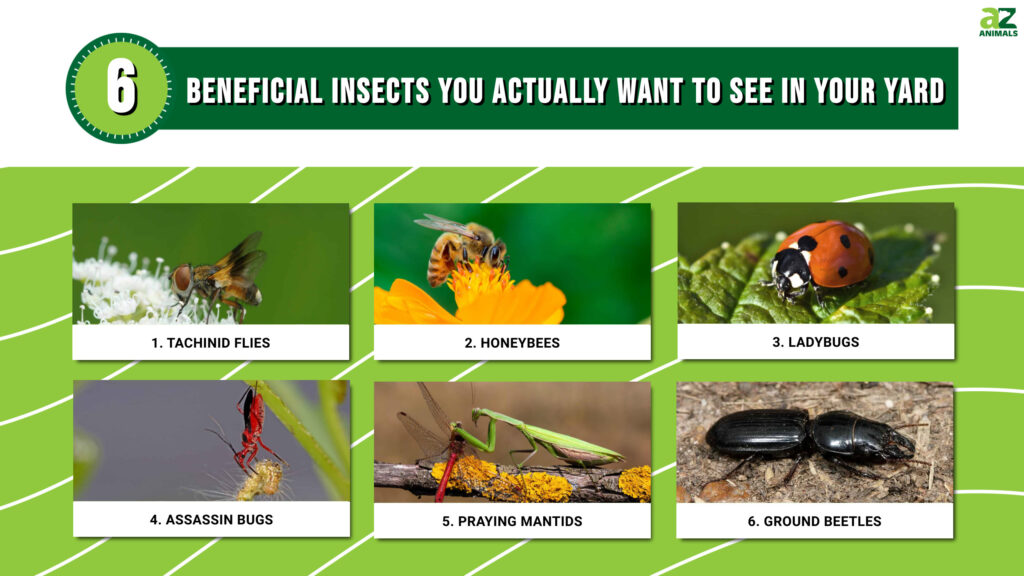
1. Tachinid Flies
Tachinid flies (Tachinidae) are parasitizers that resemble everyday house flies. Their main job as a predator is to not only get rid of Japanese beetles but other plant-devouring insects like caterpillars, earwigs, and grasshoppers, among others.
Some tachinid flies lay their eggs on the leaves of plants. When the eggs hatch and the maggots crawl out, the pest insect will swallow them as they eat the foliage. The voracious maggots feast from the inside. The females of other tachinid species inject their eggs into their prey, while others will stick the eggs on the outside of them. Either way, the maggots find their way into the insect’s body, killing the pest.
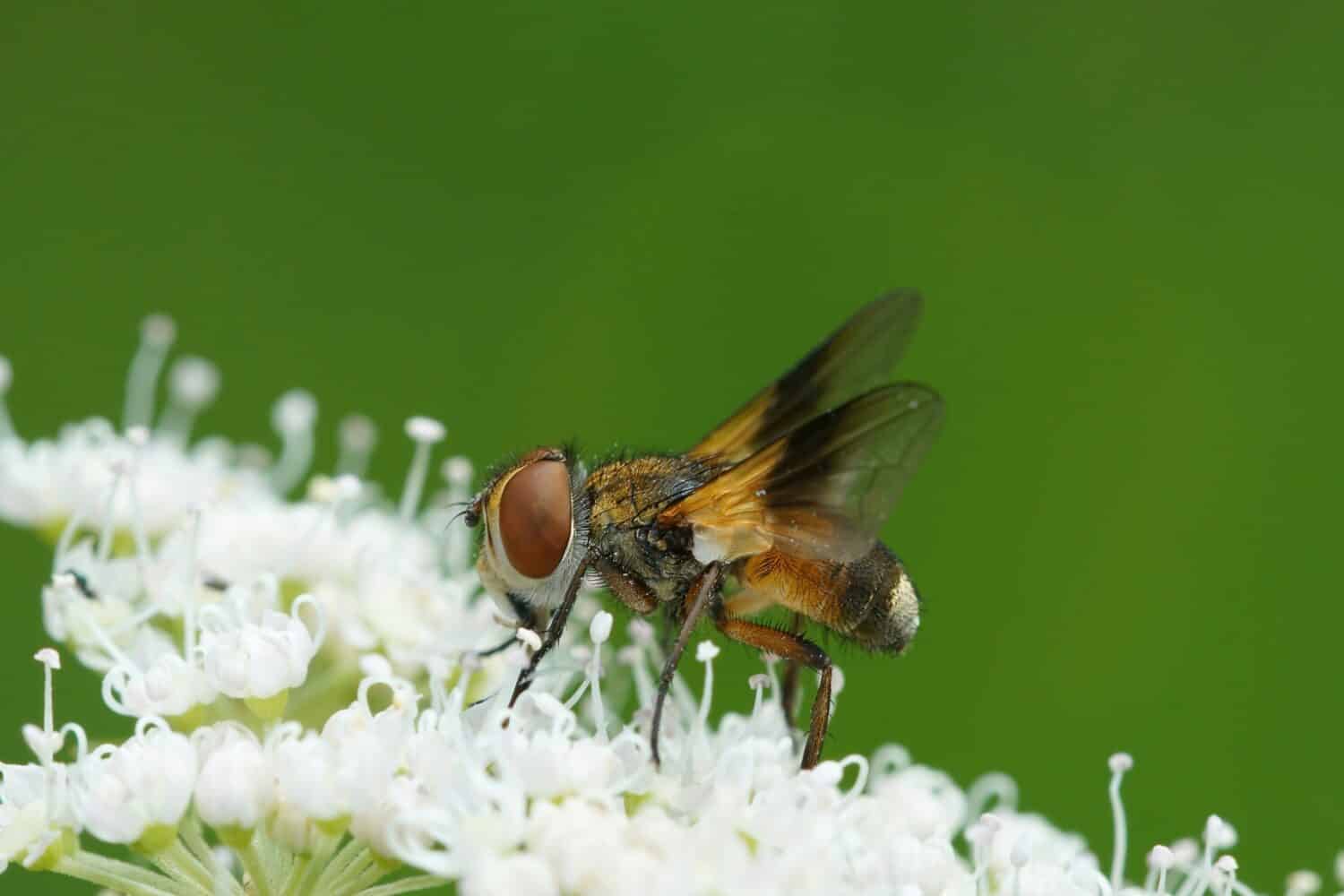
Tachinid flies protect your yard from all sorts of pests, including caterpillars and Japanese beetles.
©HWall/Shutterstock.com
2. Honeybees
Honeybees (Apis mellifera) are not only important to the production of honey, but they are also the chief pollinators of crops, making the honeybee one of the most beneficial insects you will ever come across. The value of the crops they pollinate in the United States hovers around $15 billion annually. The bees also pollinate 80 percent of all flowering crops or 33 percent of everything we humans eat.
In 2021, honeybees produced 126 million pounds of honey, with each colony, on average, churning out 46.9 pounds. But that’s not the only reason honeybees are beneficial. Doctors sometimes use bee venom when treating autoimmune diseases in patients.

Honeybees pollinate 80 percent of flowering crops.
©yod 67/Shutterstock.com
3. Ladybugs
Who doesn’t love a ladybug (Hippodamia convergens)? About 5,000 ladybug species inhabit the planet. The insects, also known as Lady beetles or Ladybird beetles, come in different hues, although those with orange and black spotted shells are the most common. If you see ladybugs in your yard, don’t stomp, swat, or kill them. Despite their diminutive size, ladybugs are voracious eaters. They love to gobble up aphids (plant lice), mites, and other insects that can destroy plants and crops.
Ladybugs are so good at doing their jobs that Japanese scientists have worked hard for years to see if the bugs can replace pesticides. The researchers selectively bred a family of ladybugs that don’t fly. The bugs stay on plants devouring other bugs that swing by to do the plant harm. The no-flight ladybugs have already reduced damage to Japan’s mustard spinach crop by 90 percent.
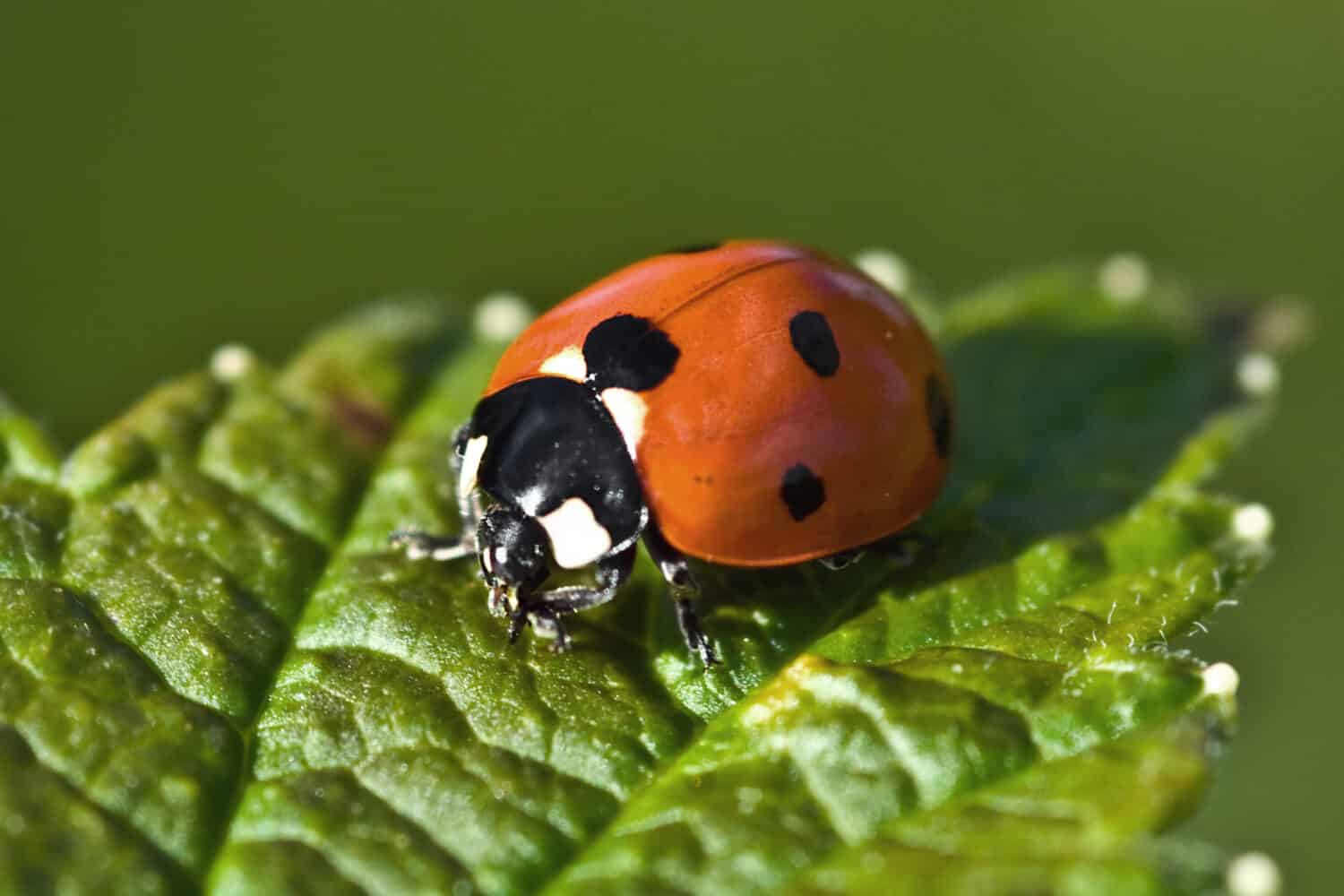
Although tiny, the ladybug can keep your plants safe from a variety of pests.
©denlog82/Shutterstock.com
4. Assassin Bugs
It’s safe to say that assassin bugs (family Reduviidae) probably have the coolest name of all the insects in your garden and yard — for a good reason. With around 7,000 species around the world, including wheel bugs and kissing bugs, assassin bugs are murderers of destructive insects, especially aphids, caterpillars, and leafhoppers. Some assassin bugs are menacing, with a stiletto-like proboscis that injects a fatal venom into its victim. Once the assassin sticks its prey, it feeds. Assassin bugs don’t just lay in wait for their victims, they’ll actively move from plant to plant, bush to bush seeking out their next meal.
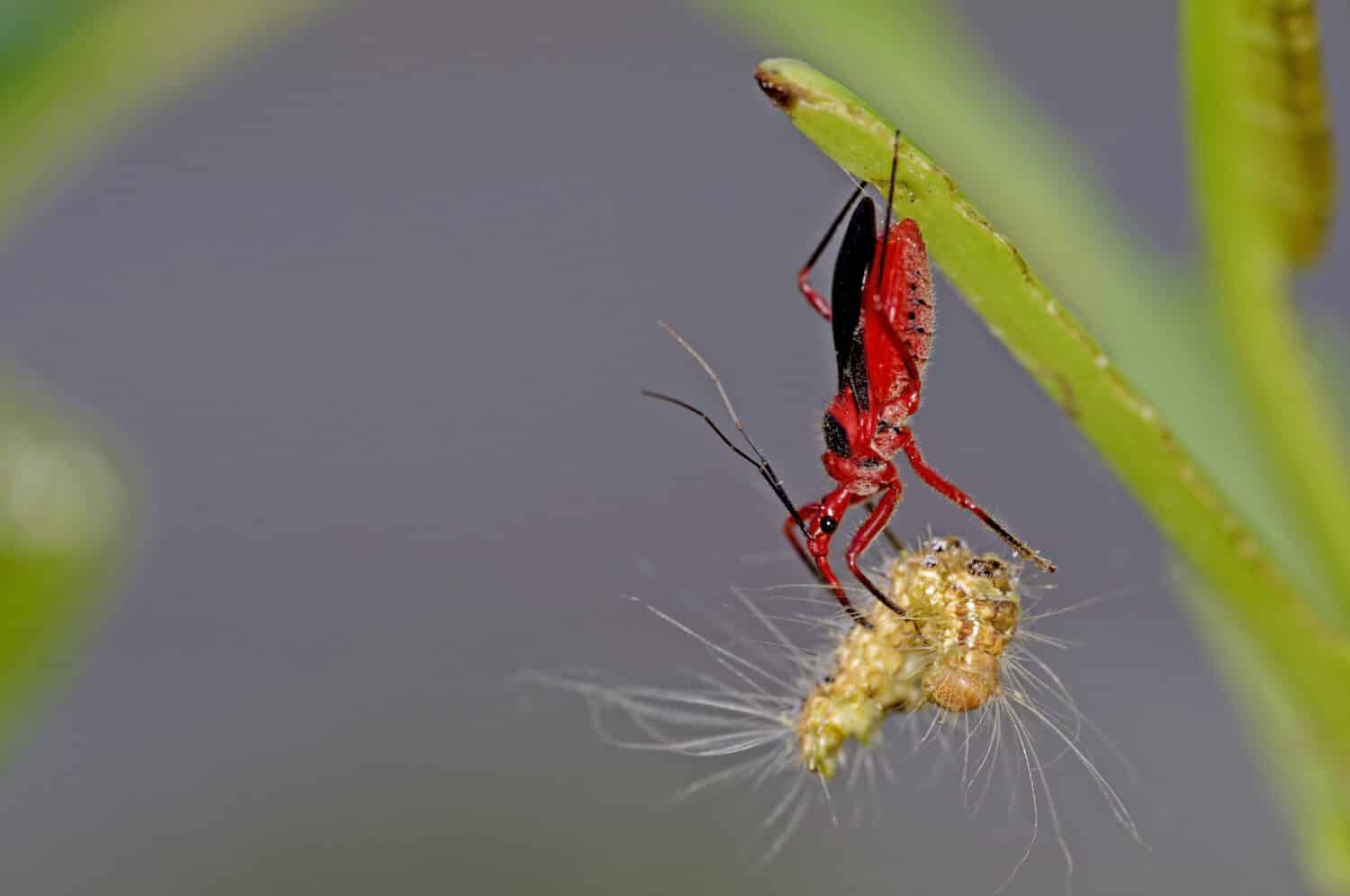
Assassin bugs use their proboscis as a weapon.
©Decha Thapanya/Shutterstock.com
5. Praying Mantids
The Praying mantis (Mantis religiosa) is perhaps the most recognizable insect in your yard as well as one of the most beneficial. It has a long thorax, eyes that would make Barney Google blush, and bent front legs that make the critter look as if it is in constant prayer.
These outworldly-looking insects are voracious eaters of many backyard pests, including mosquitoes, moths, wasps, mites, and so much more. Yet, praying mantises also devour other beneficial insects, such as butterflies and bumblebees.
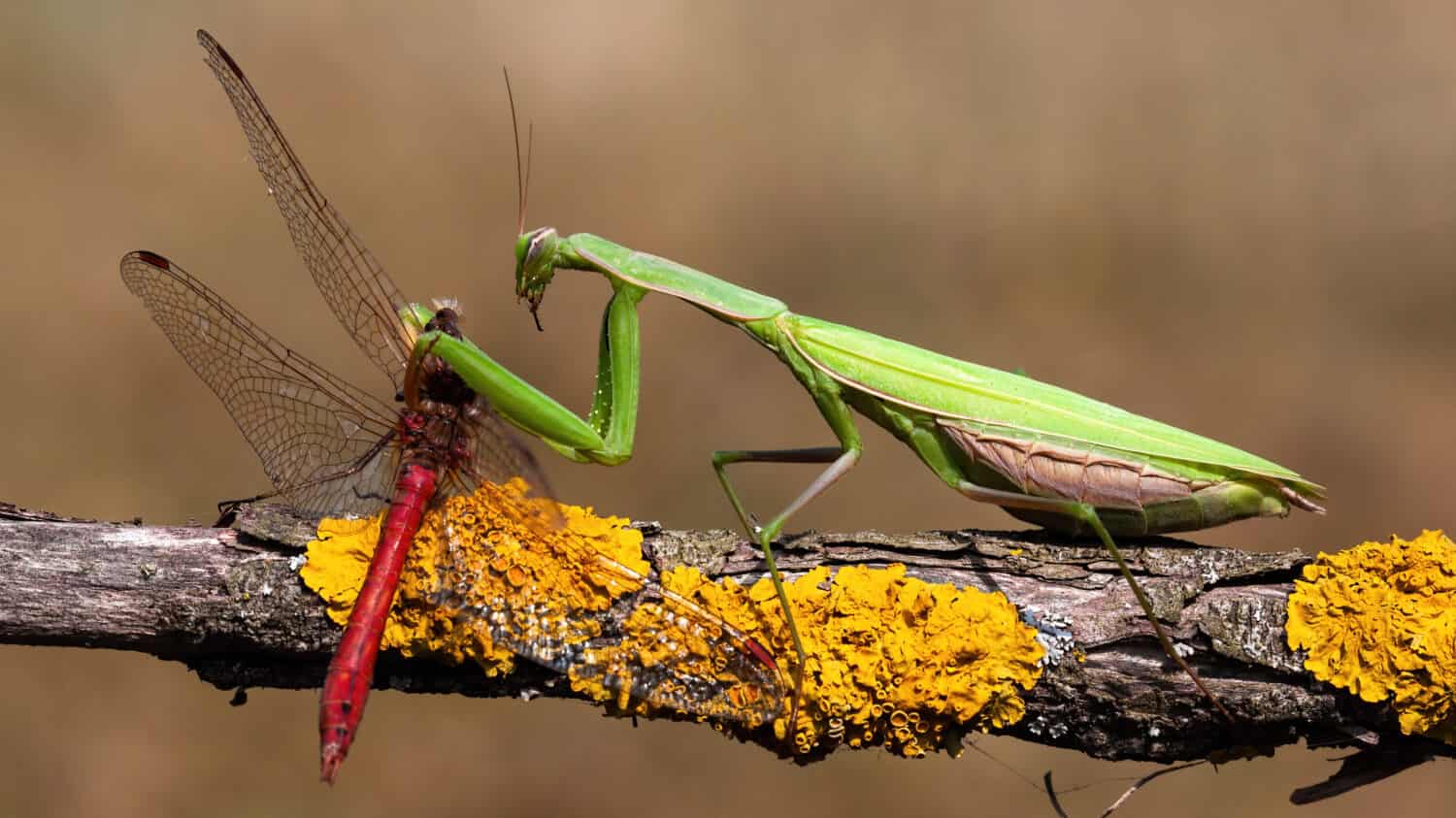
Praying mantids are among your yard’s most stalworth protectors, but sometimes they don’t care who they kill.
©WildMedia/Shutterstock.com
6. Ground Beetles
With its hard armor-like shell, this Abrams tank of a beetle eats a whole host of pests, including slugs, silverfish, and weevils, among other insects. They’ll also attack the pugnacious Japanese beetle. There are 40,000 ground beetle species around the globe.
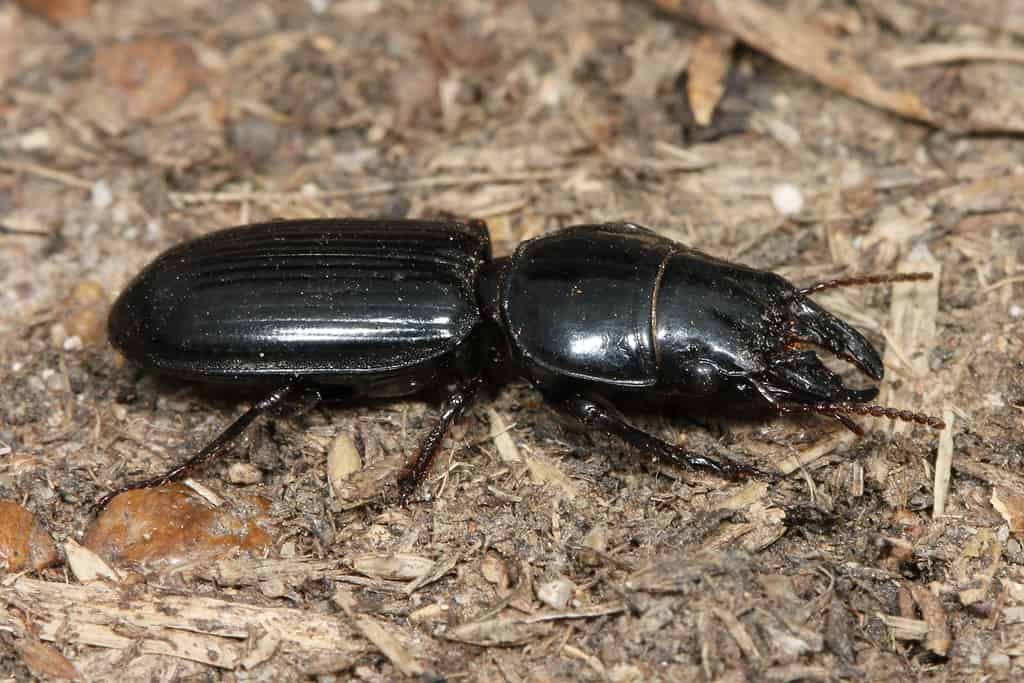
Big-headed ground beetles have an intimidating look, but they are neutral and occasionally beneficial.
©3,000 × 2,000 pixels, file size: 2.09 MB, MIME type: image/jpeg – License
The photo featured at the top of this post is © Dr Morley Read/Shutterstock.com
Thank you for reading! Have some feedback for us? Contact the AZ Animals editorial team.





